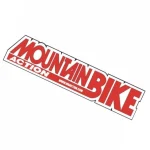FLAT PEDAL VERSUS CLIPLESS PEDAL POWER TEST – IT’S PROBABLY NOT WHAT YOU THINK
How much output are you leaving on the trail by going with flats on your mountain bike?

FLAT VERSUS CLIPLESS PEDAL POWER TEST – IT’S PROBABLY NOT WHAT YOU THINK
By Hunter Allen
It’s a question that has been asked since the beginning of the creation of clipless pedals for mountain biking: “Do they help you go faster than flat pedals?” Flat pedals on mountain bikes have been the standard since the invention of the MTB in those heady Marin County Mountain days. Flat pedals give you the option to quickly and easily put a foot down for balance, throw a leg out around a turn, adjust your foot on the pedal for better balance, and it’s just easier to jump on any bike and go for a ride no matter what shoes you are wearing.
Along came clipless pedals for mountain bikes, and everyone said, “Will you be able to unclip in time?,” “What about technical sections?,” “Are they more economical (faster for less energy expended)?,” and the best statement of all, “Only roadies ride those!” Clipless pedals offer a locked-in connection between the foot and the pedal, allow for pedaling a larger range of the pedal circle, minimize the size of the pedal itself so it doesn’t get smacked around quite so much on rocks and roots, and for those riders (roadies!) used to pedaling in clipless, they adapt quickly to them on a mountain bike.

With the introduction of a flat-pedal power meter by SRM, we now have the ability to compare clipless power-meter pedals to flat pedals! SRM is the original power-meter manufacturer and has been known as the gold standard in power-meter measurement for many years. Their SPD power-meter pedals and flat power-meter pedals are both well designed and easy to use. Rechargeable and sure-footed, the engineers at SRM have created some excellent power-meter options for mountain bikers. I knew when I saw these new power-meter pedals come out, I had to get my feet on some to test them and try to answer the age-old question, “Which are better, flats or clipless?”
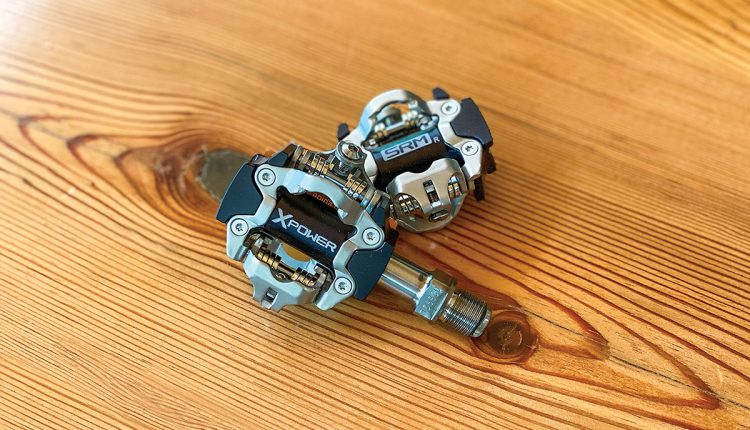
Answering this question is not as easy of a task as you might think, because there are times when flats might be faster and other times when clipless are faster all in the same half-mile section of trail! When you start to use both of the pedals and begin quantifying exactly where each pedal might be better or worse, you really learn the strengths and weaknesses of each platform. We often see downhillers on a specific course with flats and then another course with clipless, and the riders immediately know which they feel more comfortable on and/or faster using. This isn’t as obvious, though, in a possible cross-country course that has technical sections, climbing, flats, rollers, and tight singletrack that requires precise and careful steering and body English to navigate.
When flat pedals are better in some sections and clipless better in other sections, could those sections that flat pedals are better in add up to a quicker lap time? Or, does it need to be a special course that only contains a certain type of terrain? What about steady climbs? Will clipless pedals always be better on a climb as you can use more of the pedal stroke when climbing? What about riders who just “stomp” harder? I did my best to answer these questions over the past year of testing and working with the SRM pedals. Working with various riders of different abilities and bias towards flats and clipless made for a challenging yet thorough environment to answer these questions.
What does the science say about “pulling up” on the pedal stroke? The science clearly says that the best riders do not “lift up” on the pedal stroke and this is just a myth. Dr. Jeff Broker, PhD, has studied this for over 10 years and published multiple papers showing both elite and non-elite cyclists who are successful just “stomp” harder on the downstroke and do not “pull up” on the upstroke.
As a matter of fact, there are studies that show that “pulling up” on the pedal stroke actually costs you more energy. What do elite cyclists do? They get their foot out of the way of the pedal faster than non-elites. You see, on the upstroke, the pedal lifts up and “hits” the bottom of your foot, faster than you can get the foot out of the way, and the foot resists the pedal from coming up. It’s actually an opposing negative force on the downstroke and is called “gross power absorbed,” which is a negative number. For example, a rider could resist as much as 40 watts on the upstroke as the pedal hits the bottom of the foot! “Gross power released” is the power released on the downstroke and the force you are releasing from your body into the pedals, cranks, chain, etc., to propel the bicycle forward. This is quite obviously a positive number (for example, 200 watts).
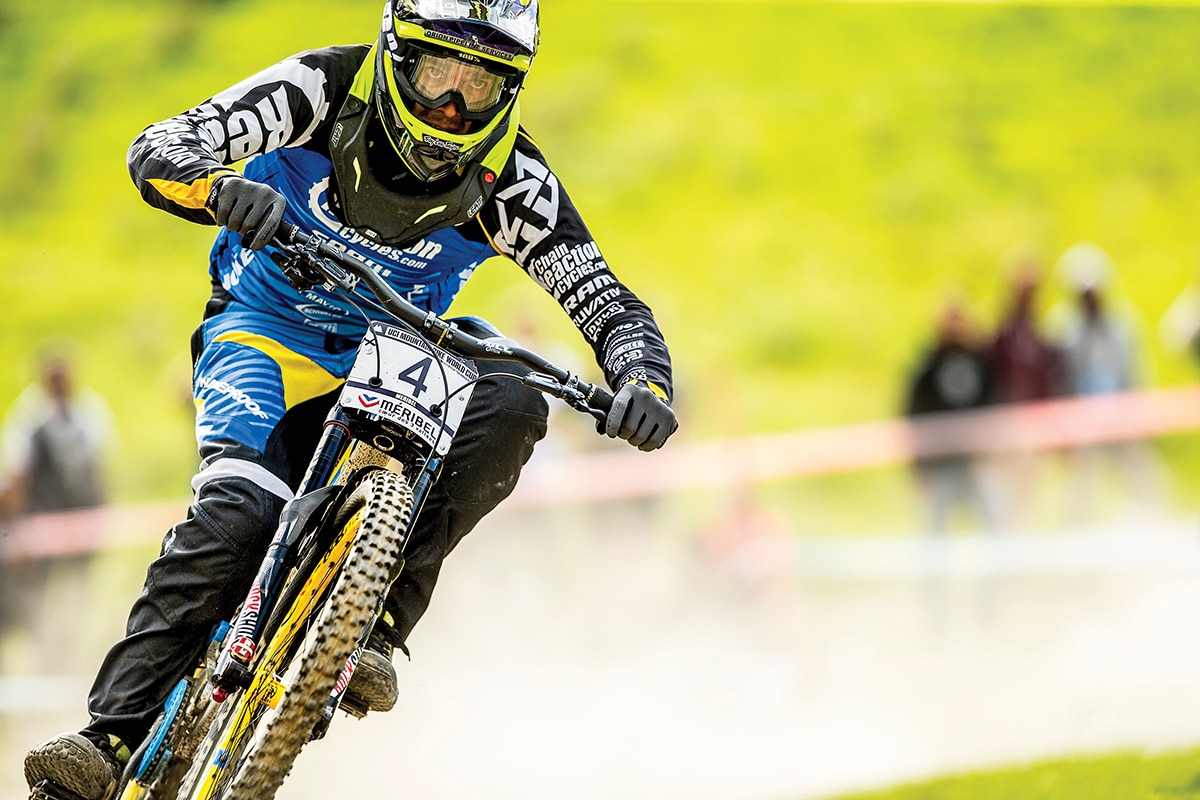
It’s also important to remember that your legs are opposing each other on the cranks. As the right leg releases power on the downstroke, the left leg absorbs power on the upstroke. If the right leg releases 200 watts on the downstroke and the left leg absorbs 40 watts, then the net power on the right pedal phase is 160 watts. This means that you could really “stomp” hard on the downstroke, but your opposing leg also can’t get out of the way fast enough and creates more resistant forces.
So, how can you get your foot out of the way faster? One technique is to use your intention to drive your knee to the handlebar, which has the effect of moving your foot through the top of the pedal stroke faster and doesn’t engage the hip flexors. Deliberately lifting up with your foot and engaging the hip-flexor muscles only slows down the process of getting the foot out of the way of the pedal. What does all this mean in terms of flat pedals versus clipless pedals for mountain biking? Could, in fact, flat pedals be just as good as clipless pedals for mountain biking because you can just stomp harder?
For certain this past year spent testing the SRM power-meter pedals, I did my best to honor the scientific method principles, but I readily admit, these tests would not result in any sort of published paper in a peer-reviewed journal. I am not a scientist, nor do I play one on the internet. I am a very keen and knowledgeable cycling coach that happens to have spent the last 20 years working with power meters, analyzing power data, and I co-founded the TrainingPeaks software, so I intimately know the ins and outs of power data.
Another issue you should keep in mind as you read this article is, could there be bias in the riders that might impact the results? Probably. Maybe. It was impossible to make this a double-blinded study, as I had to remove the pedals from one bike, reinstall the other pedals, then calibrate them, so I clearly knew which pedals were on the riders’ bikes. The riders knew immediately which pedals they were riding as well, since they had to clip in or not, so it’s not even a single-blinded study. Again, this article is not attempting to appear in any scientific journals, and I offer it to you so that you can see the results that I came up with, and then you can make up your own mind.
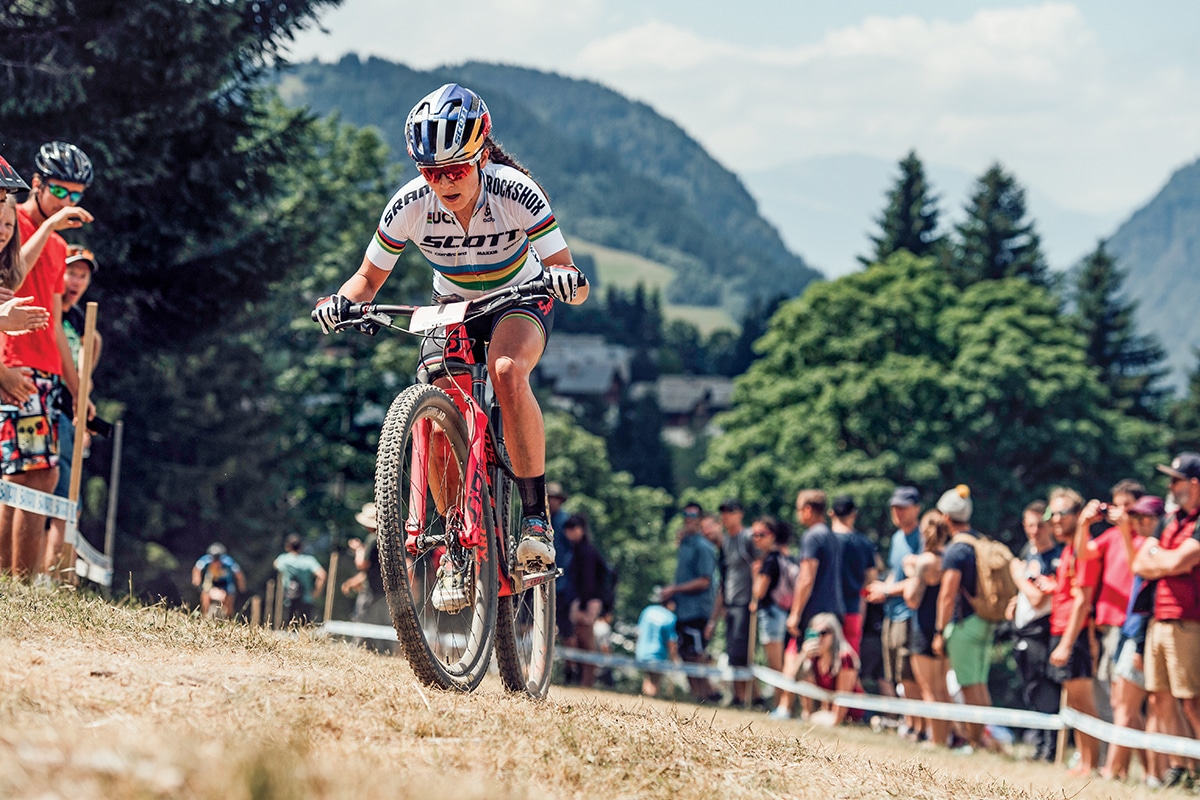
Photo by Bartek Wolinski/Red Bull Content Pool
THE TESTS
There were multiple different test courses that I used throughout the year. The circuit courses all were between 8–10 minutes long, contained a section of steady uphill pedaling, some fast downhills with a few small bumps/jumps, some twisty, technical singletrack and a questionable sketchy section that made you wonder, “Maybe flats would be the better option here, because if I come off here, I won’t be able to clip out in time before I hit the deck.”
The climbing courses were all a steady climb for at least 15 minutes, and the gradient was between 3–5 percent, so nice solid, steady climbs without too many steep sections. I wanted a climb where the riders could get into a good rhythm and maintain a consistent intensity. In all the tests, the riders were asked to ride just below their functional threshold power (FTP), around 90 percent of FTP. This, in my opinion, is a great intensity in which to test performance-enhancing gear.
This intensity is repeatable, and riding at or above threshold usually ends up in creating inconsistent results due to the rider going too hard in the first test, so that the numbers in the second test are impacted negatively. Of course, that makes it hard to distinguish between a difference between the different gear being tested and whether or not the rider is just fatigued from the previous efforts.
What I did not test was a pure downhill, mainly because I didn’t have access to any hard-core downhillers who were willing to be guinea pigs on the local downhill trails. The answer to this question will have to wait for another issue!
THE RIDERS
Rider A: 50-something former elite male racer, used to riding clipless for over 30 years. Last used flats when racing BMX.
Rider B: 50-something, very fit female racer, uses flats 90 percent of the time, uses clipless on the road.
Rider C: 20-something, fit female enduro and cross-country racer, uses flats and clipless equal amount of time. Very comfortable with both types of pedals.
Rider D: 20-something, somewhat fit male newbie rider. No bias on one pedal system or another.
Rider E: Junior male elite racer. Rode flats and raced downhills and enduros for five years. Recently converted to cross-country racing and has ridden clipless for one year.
Rider G: 30-something fit male, ultra-MTB rider. Always ridden clipless, self-professed skinny-climber type, not so great on the techy stuff.
Rider H: 40-something female. Hobby/recreational rider, only rides flats. Petrified of riding in clipless pedals. Took a while to build confidence to use them.

THE RESULTS
The results were somewhat surprising to me, honestly. I thought that the clipless pedals would blow the flat pedals out of the water with really large time gaps and high-wattage differences.
In all cases but one (Rider H), which I’ll discuss in just a bit, the clipless pedals were faster and the wattage output was higher for equal heart rates. The differences weren’t as great as I expected, though. On the climbing tests, the clipless pedals were on average 26.4 seconds faster for a climb that took the strongest rider 15:34 and the slowest rider 27:32. That’s not much of a difference for a fairly long climb. Although, 26.4 seconds is significant if you are in a race and you are nearly 30 seconds behind someone at the top of a climb, so keep that in mind.
The wattage for the clipless pedals was 20.2 watts higher as an average across our test subjects. This number did not surprise me much, as I have analyzed enough data over the years now and seen many riders about 15–30 watts lower on their flat pedals than on clipless. Therefore, 20.2 watts seems very reasonable compared to other data I have analyzed in the past.
When we look at the power-comparion chart again, imagine on a climb that your bike is at an angle and your body position (pelvis is rolled forward more) is leaned over more, you can start producing power sooner on the pedal stroke (closer to 1 o’clock), and you can also continue to produce effective power at 6 o’clock and past. Using flat pedals on a climb really only allows you to produce effective power from roughly 2 or 3 o’clock to 5 o’clock on the pedal stroke, so a much smaller range in which you can apply force to the pedals. This most likely is one of the reasons that riding clipless pedals on a climb allows the rider to produce more watts.
For the circuit test course, the time gaps were actually larger, with clipless pedals being 48.7 seconds faster on average than the flat pedals. In one of the tests, the rider was 64 seconds faster with the clipless pedals over a short 12-minute course. Can you imagine reducing your lap time by a minute in a race? That’s massive.
For all riders (except Rider H), clipless pedals were clearly faster in a circuit with lots of traditional obstacles and terrain that you would find on MTB trails around the world. Just like with the climbing tests, a rider can produce power over a wider range of the pedal circle in a singletrack trail, and that results in a faster time. There were times in my test courses where the rider had to produce a high force (to hop or unweight their bike) to get over an obstacle (about a 12-inch-diameter log) without stopping, and I know three riders had to stop when they got to the same obstacle using the flat pedals.
While many riders can easily bunnyhop their bike on flats, many cannot, and hopping your bike (or just unweighting it in some cases) can make a big difference in your flow on a trail. Being clipped in helps all riders with bunnyhopping and even doing wheelies, so you can just pop your front wheel over a rock or log. Smoothness and flow count in singletrack riding and clipless pedals can make a difference.
The wattage difference between the flats and clipless produced for the circuit course was the surprise, as the riders on the clipless pedals only produced 10.8 watts more on average than the flat pedals. That’s really not much, especially when you consider the “error of measurement” of the power meters is roughly 5 watts.
Again, this shows just how important your technical skills are on trails with a variety of terrain and obstacles. Your wattage may not be that much higher using clipless pedals, but you’ll ride much faster because of the additional pedaling range throughout the pedal circle and also have the ability to smooth out obstacles when clipped in.

A note on Rider H: Rider H was the only test subject who was petrified of riding in clipless pedals. She had never ridden in clipless pedals despite having ridden mountain bikes for over 10 years. It took quite a bit of convincing to get her to try the pedals, and then coaching her so that she would feel like she could even ride the course without falling over. She maybe spent an hour practicing with the clipless pedals before doing her test run. That’s not much time to learn a new piece of gear, especially something so critical to cycling and requiring such a massive change in riding and pedaling style.
When she approached the log that she needed to nearly hop over in the circuit course test, she came to a full stop about 10 yards before it, walked the bike over it and beyond it, and it took a little time for her to get clipped back in. When she did the same obstacle with her flat pedals, she just rode over it, lifting up her front wheel and slamming the rear wheel into it with enough force to get the rear wheel over it. Consequently, she was faster in this section alone with the flat pedals.
This is an important thing to point out to many readers. If you are not used to clipless pedals or are deathly afraid that you are going to fall while using them on a trail, then it’s quite possible you will be slower using them than riding flats. Clearly, this is just a skill issue, though, and I have to point out that as a cycling coach, I would highly encourage you to practice, practice, practice with the clipless pedals, and you’ll build confidence and ability so that you will ride faster using them.
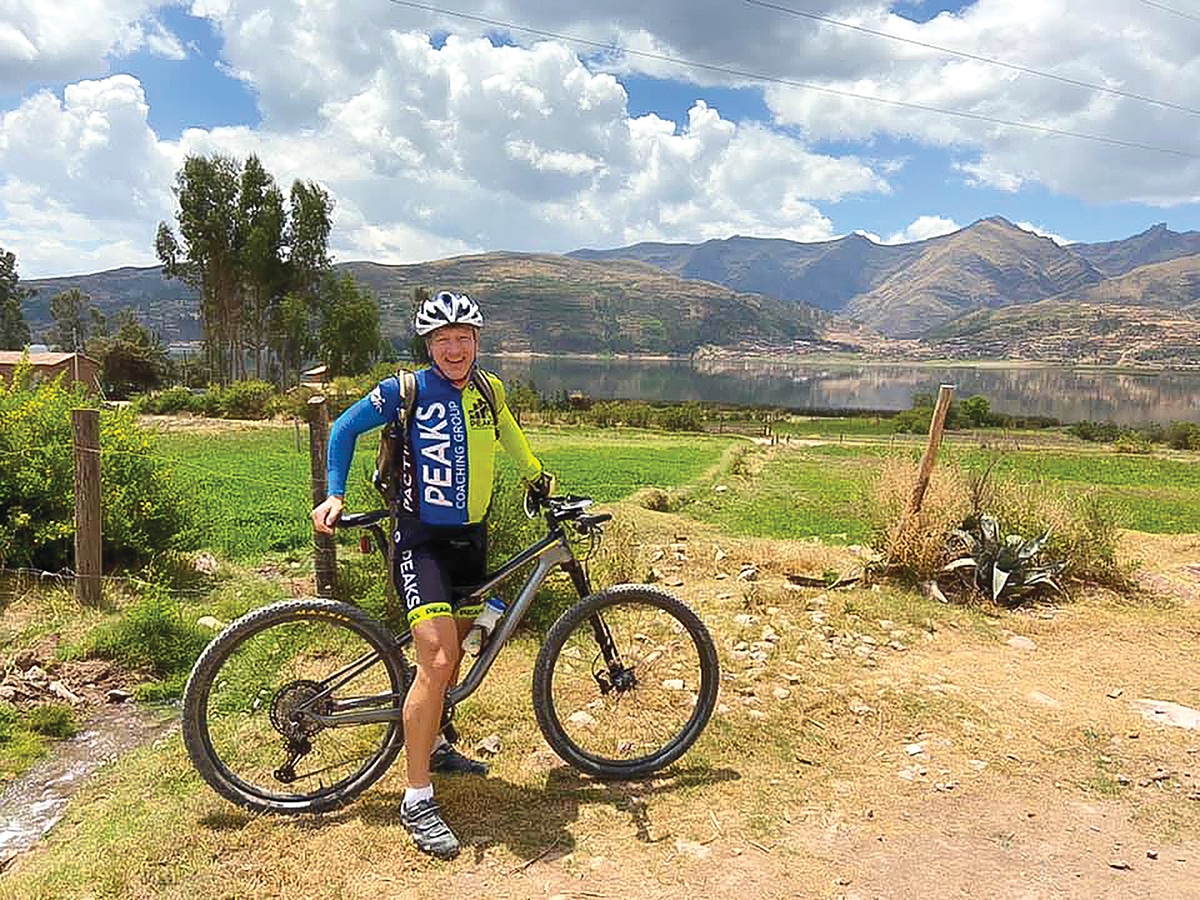
When you take Rider H’s data out of the test pool, then that raises the difference in the climbing average from 26.4 seconds faster to 41 seconds faster using clipless pedals!!! When Rider H’s data is pulled out of the circuit-course test data, then the average goes from 48.7 seconds faster on clipless pedals to 65 seconds faster using the clipless pedals!
What did the test riders think and feel between the two? After each test, I queried the test riders and asked them what they thought. Were they faster on one set versus the other? Could they tell? Was one set of pedals easier than the other?
All riders (except for Rider H) said that they felt that the clipless pedals were easier, and that using the flat pedals they had to push harder on the downstroke with more effort in order to feel like they were maintaining the same speed. Even though the riders perceived they were pushing harder (with presumably more watts) using the flat pedals, their average wattages were not higher in our measurements (except with Rider H).
The average heart rates of the riders between the two tests were also not that different, and in all but three tests, the heart rates using clipless pedals were higher than the flat pedals. These were not big differences, and a reminder that I asked the riders to ride below their threshold power and in the upper tempo/sweet spot zone. Not one of the riders could/would definitively say that they actually felt faster on one set or the other. They all agreed that it was hard to tell if they were going faster or not when comparing the pedals and their performance tests. Rider H is the only outlier in that she knew she was faster on the flats, since she didn’t have to stop, get off her bike, walk it over the log and then struggle to get back in the pedals afterwards.
It’s my opinion that since the circuits were shorter than 15 minutes and the climbs weren’t herculean hour-plus epics, that the differences in speed are relatively small and as such, it’s hard to perceive a speed differential between the tests. I can only imagine that the differences would have been much more perceptible if each rider had ridden for four hours or so on each set of pedals, and for that accumulated length of time they would have been able to perceive the speed differential, especially since using the flat pedals would have most likely created more fatigued muscles and then slower speeds in the last hour.
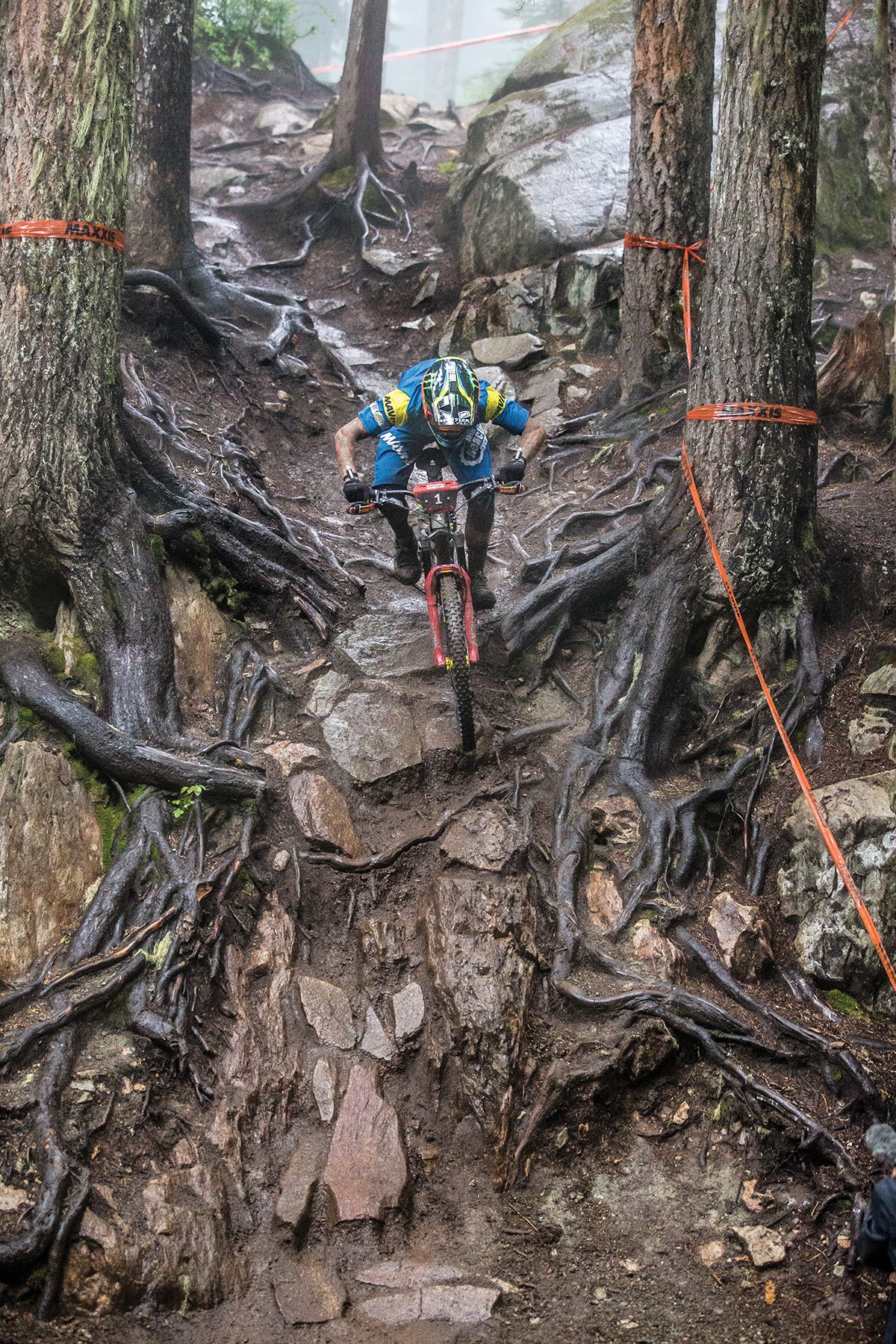
Photo by Gibson Pictures
FINAL THOUGHTS
The results from these tests seem to prove pretty conclusively that using clipless pedals will help you ride faster than using flat pedals. We cannot definitively say that clipless pedals are more economical (higher-wattage average for lower heart rates), because the average heart rates of the riders between the two tests were also not that different.
As a matter of fact, in all but three tests, the heart rates using clipless pedals were higher than the flat pedals. These were not big differences and a reminder that I asked the riders to ride below their threshold power and in the upper tempo/sweet spot zone. I believe that this is due to ability to create power over a wider range of the pedal stroke, thus recruiting more muscle fibers that need to have blood flow to them.
I do believe that a true peer-reviewed study would show that the clipless pedals are more economical, especially the longer the test duration. If you are doing sustained climbs on flat pedals, you are at a severe disadvantage compared to riders with clipless pedals. You’ll need to produce more power, possibly as much as 10–15 percent more power using flats on a climb to keep up with your “virtual” self using clipless pedals. In a typical singletrack, clipless pedals are also faster, but not necessarily because you will be producing more wattage, but because they help you ride more smoothly, get over obstacles easier and pedal through a wider range of the pedal circle as compared to flat pedals.
Things that you also need to keep in mind are:
1) Everyone responds a little differently, so while I found with my small sample size some pretty solid evidence for using clipless pedals, you could be faster in flats.
2) Newbies to clipless pedals will likely be slower than in their flats for a little while until they become accustomed to the new pedaling and riding style, along with increasing their skills.
3) Pulling up on the pedals is a myth. You are not faster if you pull up. One study even proved that deliberately pulling up when pedaling results in metabolic inefficiency.
4) Flat pedals absolutely have their place in mountain biking. I would suggest that you continue to use them where and when you feel they will be faster, and if you do a lot of downhilling, then there maybe no reason to ever use clipless pedals.
5) This is all for fun. So if riding flats means you have more fun and are more relaxed, then go for it! If winning races and beating your buddies to the top of the next hill is your idea of fun, then make sure you are riding clipless pedals!

Editor’s note: Hunter Allen is the co-author of three books: “Training and Racing With a Power Meter,” “Cutting Edge Cycling” and “Triathlon: Training with Power.” Hunter’s articles on power analysis and training have been published in over 20 different cycling magazines over the past 20 years, and he is known as one of the top cycling coaches in the world. He also has pre-built online training programs available at www.shoppeaks.com, as well as plans for mountain bikers, masters and even grandmaster riders. Hunter and his coaches at Peaks Coaching Group help all levels of mountain bikers feel good and finish stronger with more power in their events. You can contact Hunter directly at www.peakscoachinggroup.com for personal coaching and camps.

